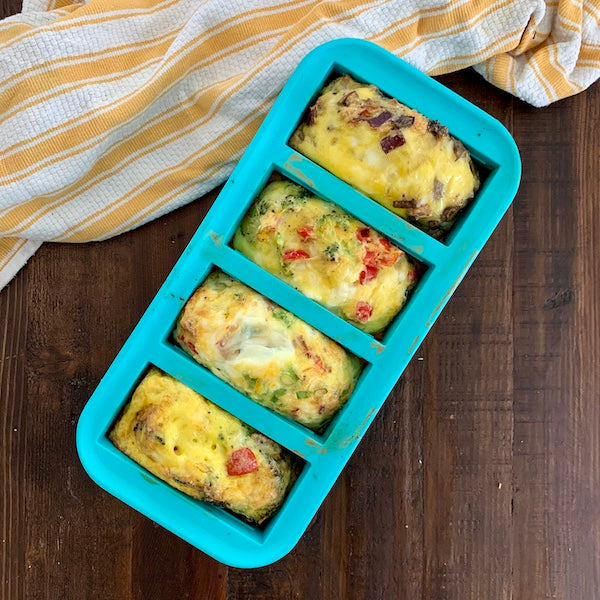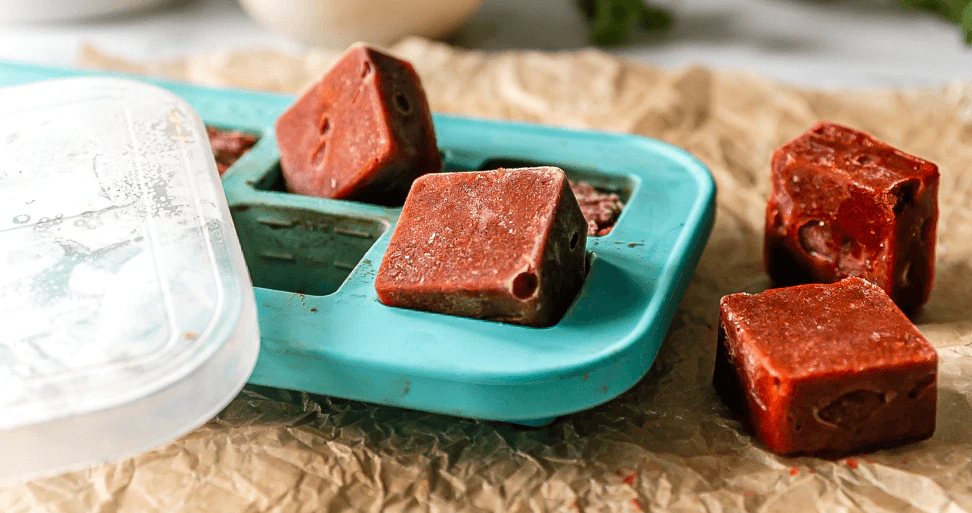A little bit of sunshine does the body good, especially when you learn that it's necessary for making Vitamin D.
Vitamin D is a fat-soluble vitamin that we get through sunshine and food, however, we often don't get enough of it through either source. It's estimated that over 40% of Americans are deficient in Vitamin D, with the most at risk populations being located in areas with lower sunlight, those that stay mainly indoors, and those with darker skin.
The Recommended Dietary Allowance (RDA) for children 1-18 years and adults 19-70 years is 600 IU (15 mcg) daily. For adults older than 70 years, the RDA is 800 IU (20 mcg) daily. Since Vitamin D is important for bone health and immunity and so many people are deficient, we wanted to see how your freezer could help.
Many people take a Vitamin D supplement but there are foods that are naturally high in Vitamin D and others that are fortified, such as cereal, orange juice, and milk.
Vitamin D2 vs Vitamin D3
There are two forms of Vitamin D: D2 (ergocalciferol) and D3 (cholecalciferol). The two types of Vitamin D differ in their sources. Vitamin D2 comes from plant and fortified foods, while Vitamin D3 comes from animal foods. Dietary supplements can be either D2 or D3. When your body makes Vitamin D, it's D3.
Sources of Vitamin D3 - Animal-Based
- Cod Liver Oil (1 Tbsp) - 1,360 IU
- Trout (3 oz) - 645 IU
- Salmon (3 oz) - 570 IU
- Fortified Cow's Milk - 100-150 IU
- Sardines (2 each) - 46 IU
- Egg Yolk - 44 IU
- Liver (3 oz) - 42 IU
- Cheddar Cheese (1.5 oz) - 17 IU
- Butter (1 Tbsp) - 9 IU
Sources of Vitamin D2 - Plant-Based
- Mushrooms (exposed to UV light, 1/2 cup sliced) - 366 IU
- Fortified Soy, Almond, and Oat Milk (1 cup) - 100-144 IU
- Fortified Orange Juice - 120 IU
- Fortified Cereal - 80 IU
How Your Freezer Can Help You Get More Vitamin D
It can be difficult to get Vitamin D in your diet so we wanted to help by curating recipes that are good sources of Vitamin D but also can be frozen. Since some of the best sources of Vitamin D can be expensive and a little goes a long way. Prepping foods into individual portions, such as smoked salmon or trout dip, and freezing it in ½-cup, 1 cup, and 2 cup portions means you can have a healthy appetizer packed with Vitamin D ready in minutes.
Souper Cubes allow you to freeze your meals in ½-cup, 1 cup, and 2 cup portions so you only defrost what you want, when you want it.
If you're new to freezer meal prep, check out this Ultimate Guide to Freezer Meal Prep. It has everything you need to know from what you can freeze, how to freeze, and how to defrost your food.
Freezer-Friendly Recipes with Vitamin D
The best way to make sure you're getting the Vitamin D you need is by eating foods that are naturally high in Vitamin D (and getting a little sunshine!). To help, we've compiled a list of our favorite recipes with Vitamin D that you can make in batches and freeze. By having a freezer full of delicious food that also happens to be high in Vitamin D, you'll be getting your daily dose without having to take a pill.
Smoked Trout Dip - 116IU Vitamin D per 3 Tbsp serving
(recipe and photo: EatingWell.com)
This smoked trout dip not only delivers a healthy dose of Vitamin D, it's also a perfect party appetizer. Serve with crusty bread, bagel chips, or celery sticks and sprinkled with herbs.
How to Freeze: freeze the dip in ½-cup, 1 cup, or 2 cup portions.
How to Defrost: the night before serving, place the dip in a bowl in the fridge to thaw.
Salmon Noodle Casserole - 73IU Vitamin D per 1⅓ cup serving

(recipe and photo: EatingWell.com)
Canned salmon is a budget-friendly and shelf-stable option that's a good source of Vitamin D. In this take on tuna noodle casserole, the tuna is swapped for salmon and asparagus is added for extra flavor. If you're going to freeze the Salmon Noodle Casserole, undercook the noodles 1 minute less than package instructions to make sure they stay firm after freezing.
How to Freeze: prepare the casserole through Step 2 and freeze in ½-cup, 1 cup, or 2 cup portions instead of a baking dish.
How to Reheat: place a frozen casserole cube in a microwave-safe bowl and add a splash of water. Cook in the microwave on high in 1 minute intervals until hot. Or place the casserole in the Souper Cubes baking dish, or other broiler-safe dish (not glass) and cover with aluminum foil. Bake at 350F until hot, about 30 minutes. Remove the aluminum foil and top with the panko mixture in Step 3. Continue baking until the cheese is melted and the topping is golden brown, about 15 minutes.
Mini Crustless Breakfast Quiche - about 55IU per serving depending on the ingredients

This easy quiche allows you to use any veggies or meat leftover in the fridge to make an easy, freezable breakfast, lunch or dinner. For an extra dose of Vitamin D, use mushrooms, cheese, and flaked smoked salmon or trout as your ingredients.
How to Freeze: bake the quiche in 1 cup or 2 cup Souper Cubes trays. Let cool completely then pop out and transfer to zip top bags.
How to Reheat: place the quiche on a microwave-safe plate and cook in the microwave on high in 30 second intervals until hot.
Mushroom Pate - 2IU per ¼ cup

(recipe and photo: EatingWell.com)
If oily fish isn't your thing, loading up on mushrooms is a plant-based option for getting your Vitamin D. In this Mushroom Pate, mushrooms are the start in this vegetarian pate. Serve it with crackers, cornichons, and pickled onions for your friends and they'll be amazed.
How to Freeze: freeze the pate in ½-cup, 1 cup, or 2 cup portions.
How to Defrost: the night before serving, place the pate in a bowl in the fridge to thaw.
Cheesy Spinach & Mushroom Casserole - 17IU Vitamin D per 1⁄2 cup

(recipe and photo: EatingWell.com)
Made with mushrooms, Cheddar cheese, milk, and eggs, this vegetarian casserole can be baked then frozen in Souper Cubes. Serve it with a salmon filet for an extra boost of Vitamin D.
How to Freeze: bake the casserole in 1 cup or 2 cup Souper Cubes trays. Let cool completely then pop out and transfer to zip top bags.
How to Reheat: place the frozen casserole on a microwave-safe plate and cook in the microwave on high in 30 second intervals until hot. Or place the casserole in the Souper Cubes baking dish and cover with aluminum foil. Bake at 350F until hot, about 30 minutes.











We would love to hear your ideas or better yet, post a photo of your cubes organized in our Freezer Meals & Recipes Facebook Group!